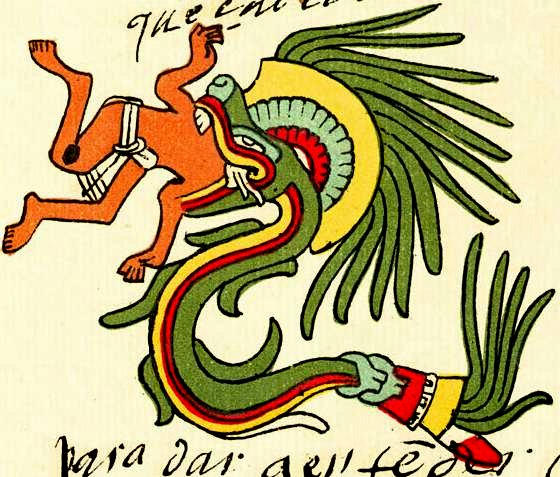Hans Alfredson is a retired Swedish actor, stand-up
comedian and writer. He has also been the manager of the Skansen zoo and
outdoor museum in Stockholm. To an international audience, Alfredson may be
best known as the evil Höglund in the film “The Simple-Minded Murderer” (also
starring Stellan Skarsgård). In real life, Alfredson seems to be a pretty
jovial and harmless man!
“Den befjädrade ormen” (The plumed serpent) is an interesting novel by Alfredson. It’s a contrafactual “alternative history” novel about Indians discovering Europe centuries before Columbus. The narrator, Caculha Hurakan, is a Mayan from Puuc, destined to be sacrificed to the gods in the Great City of Tulan, since he's a cripple and hence deemed imperfect. By chance, he is saved by Huwequen, the son of the Toltec king, but then forced to become his slave or “shadow”. Arguably, Huwequen is the main character of the story. Both men eventually find themselves in “The New World”, really early medieval Europe. Unsurprisingly, Franks and other 10th century Western Europeans turn out to be a bunch of gold-obsessed, dirty and smelly barbarians, with a strangely intolerant and fanatical religion based on the worship of a certain Xristo.
After a daring escape back to The Center of the World (i.e. Mexico), Huwequen declares himself to be an incarnate god, Quetzalcoatl (the “plumed serpent” of the novel's title). He amasses a huge Toltec fleet and intends to conquer Europe, taking revenge on the barbarians who mistreated the son of a king. However, the gods (presumably including the real Quetzalcoatl) have other plans. A huge storm scatters the fleet, and both Huwequen and Caculha end up stranded in North America, where they are taken captive by a nomadic tribe of Natives. They also encounter Torfinnr Karlsefni's Viking expedition! “The Saga of Erik the Red” claims that Karlsefni's explorers were attacked by a “one-legged man”. In Alfredson's alternate history, this man is the crippled Caculha. The story ends with the brave cripple telling his and Huwequen's story to the intrigued Native chiefs, while the ultimate fate of the king's wayward son remains unknown…
I think it's obvious that the story, while set in Toltec Mesoamerica and “Viking Age” Europe, is really about Aztecs and conquistadors, with the roles partially reversed. The culture of the Toltecs as described by Alfredson has traits usually associated with the Aztecs, such as human sacrifice and worship of Quetzalcoatl. While these things probably predate the Aztecs, the very name “Quetzalcoatl” is Aztec. (Ironically, the novel – correctly – describes the actual Aztecs as “barbarian” invaders of Mexico and foes of the Toltecs.) As for the Franks, they act like stereotypical conquistadors looking for gold while pretending to fight for Christ. Once again, these may indeed have been Frankish traits, but in context, they are meant to invoke the Spanish of a later period. I suppose Alfredson placed his anti-conquista story in a historical period when reversed roles wouldn't look completely outlandish. Another theme in the novel is the pride, fall and attempted redemption of Huwequen, giving the story a strangely “Christian” slant. Perhaps this is intended as a deliberate counterpoint to the Christianity of the Franks, which is portrayed as superstitious and hypocritical.
All in all, a relatively good novel, but apparently only available in Swedish. I read it already as a teenager and was deeply intrigued.

No comments:
Post a Comment